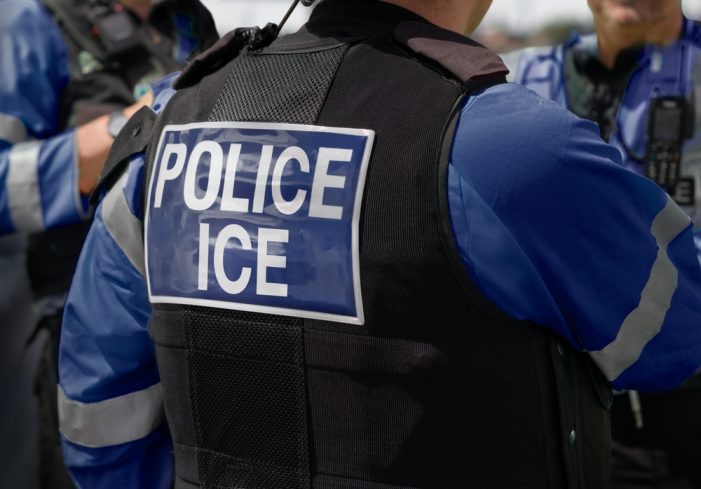By Mary Campbell
Washington, D.C.: A coalition of Democratic lawmakers has introduced the VISIBLE Act; legislation aimed at increasing transparency and accountability in federal immigration enforcement by prohibiting ICE and other immigration agents from wearing face masks or concealing clothing during public-facing operations. The “Visible Act”, introduced by senators Alex Padilla of California and Cory Booker of New Jersey, comes in the wake of scenes of masked immigration agents in unmarked vehicles snatching people off the street without meaningfully identifying their agency or presenting a warrant, prompting observers to liken Immigrations and Customs Enforcement (Ice) arrests to kidnappings.
The bill—formally titled the “Visibility for Immigrant Safety and Border Law Enforcement Transparency Act”—targets a growing trend in civil immigration enforcement where agents, particularly from U.S. Immigration and Customs Enforcement (ICE) and Customs and Border Protection (CBP), conduct public operations while wearing unmarked tactical gear and face coverings that obscure both their agency affiliation and personal identity.
According to the bill’s sponsors, this practice has led to confusion, fear, and mistrust in immigrant communities and among the general public. “When individuals cannot identify who is exercising governmental power in their neighborhood, it undermines the rule of law and threatens public safety,” said a spokesperson for one of the bill’s lead sponsors. “The VISIBLE Act ensures that enforcement operations remain professional, lawful, and visible to the people they impact.”
Key Provisions of the VISIBLE Act
Under the proposed legislation, all immigration enforcement officers engaged in public-facing civil operations would be required to:
- Display legible identification, including the agency name or initials and either a name or badge number;
- Refrain from wearing non-medical face coverings—such as balaclavas or tactical masks—that obscure facial visibility, except in limited circumstances such as environmental hazards or covert missions;
- Submit to disciplinary procedures if they fail to comply, as enforced by the Department of Homeland Security (DHS), which would also be required to investigate complaints and report compliance data annually to Congress.
The bill carves out exemptions for covert operations, environmental protections, and any actions conducted solely under criminal—not civil—enforcement authority. It does not alter ICE’s or CBP’s enforcement powers, nor does it impose new restrictions on tactical gear or operations not visible to the public.
Law Enforcement and Community Safety Concerns
Proponents of the bill cite both community safety and officer protection as central motivations. “When individuals can’t tell the difference between a federal agent and an impersonator, it puts everyone—agents and civilians alike—at greater risk,” said an immigration policy analyst. “Basic transparency measures like identification and unobscured faces enhance public confidence and reduce unnecessary confrontations.”
The bill comes amid rising public scrutiny of immigration enforcement practices and growing concerns over unmarked federal agents appearing in neighborhoods without accountability or clear authority. Civil rights organizations have applauded the proposal, saying it could prevent abuses of power and protect due process.
Political Outlook
While Democrats champion the bill as a “commonsense transparency measure,” early indications suggest it may face opposition from some Republicans and law enforcement unions, who argue that any restrictions on tactical attire could hinder agent safety or flexibility in the field.
Nonetheless, Democratic sponsors believe the bill strikes the right balance between operational needs and constitutional principles. “Transparency is not a threat to enforcement,” one lawmaker said. “It’s a safeguard for our democracy.”
The VISIBLE Act now awaits committee referral and hearings. If passed, it would mark a significant shift in federal standards for immigration enforcement visibility and civil liberties in public operations.

